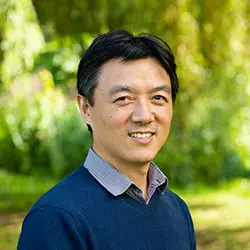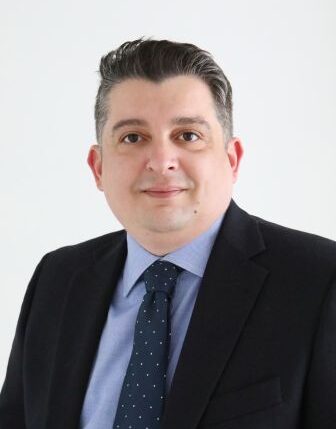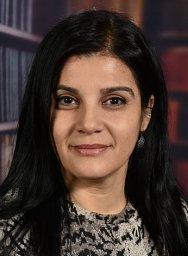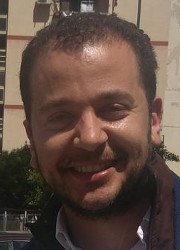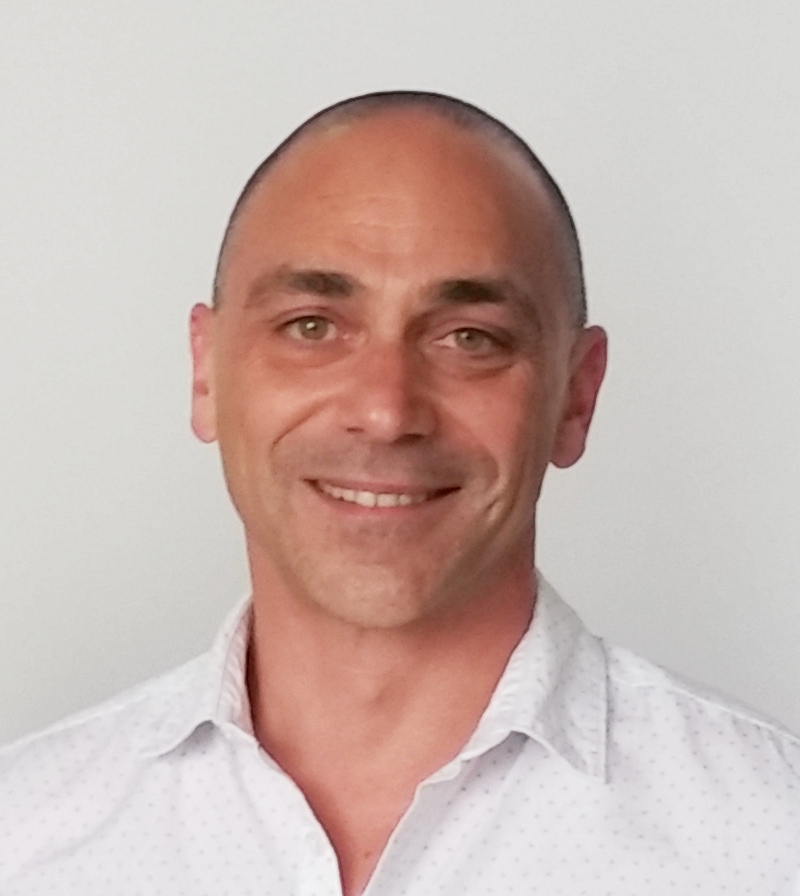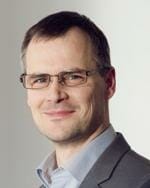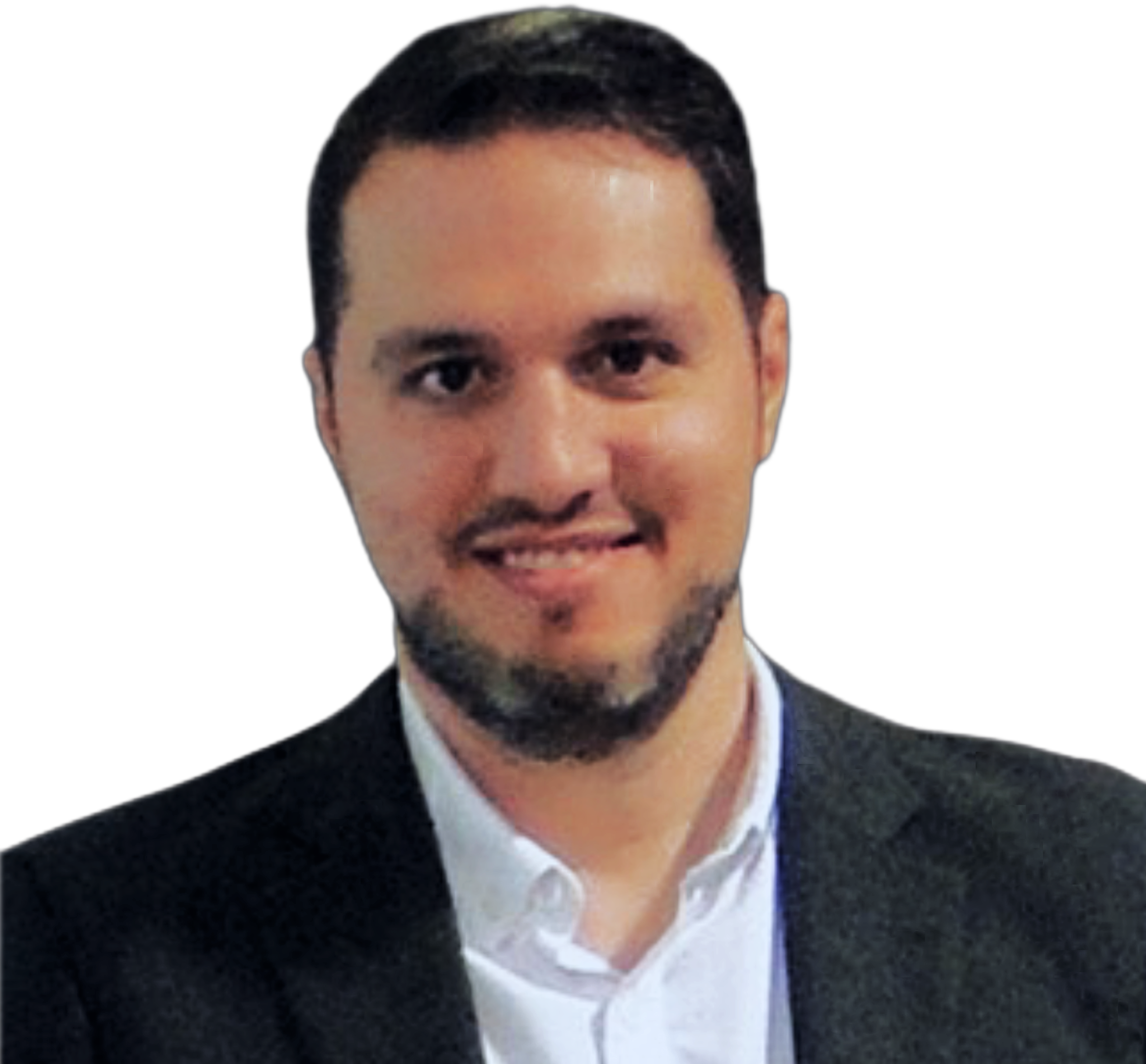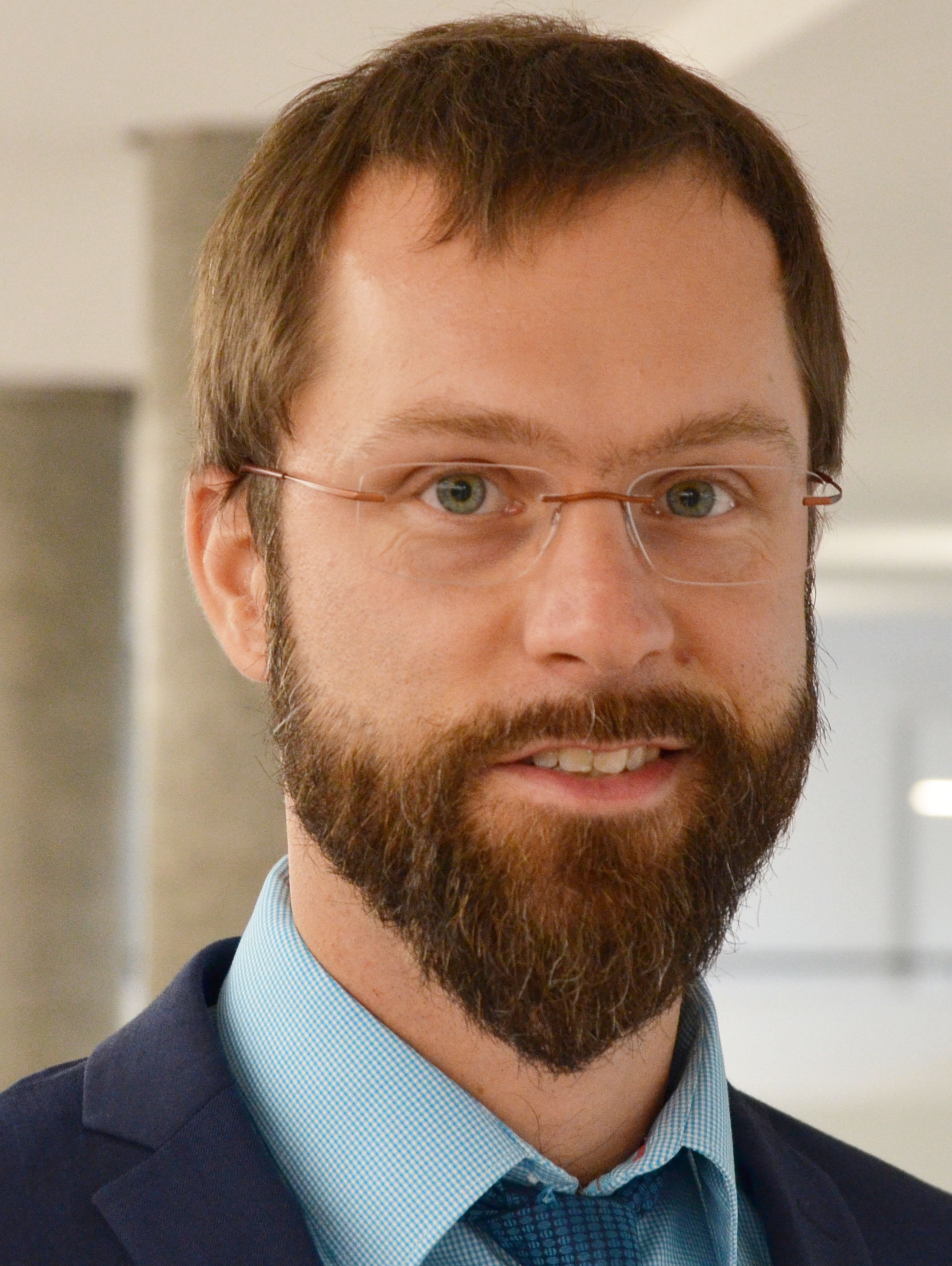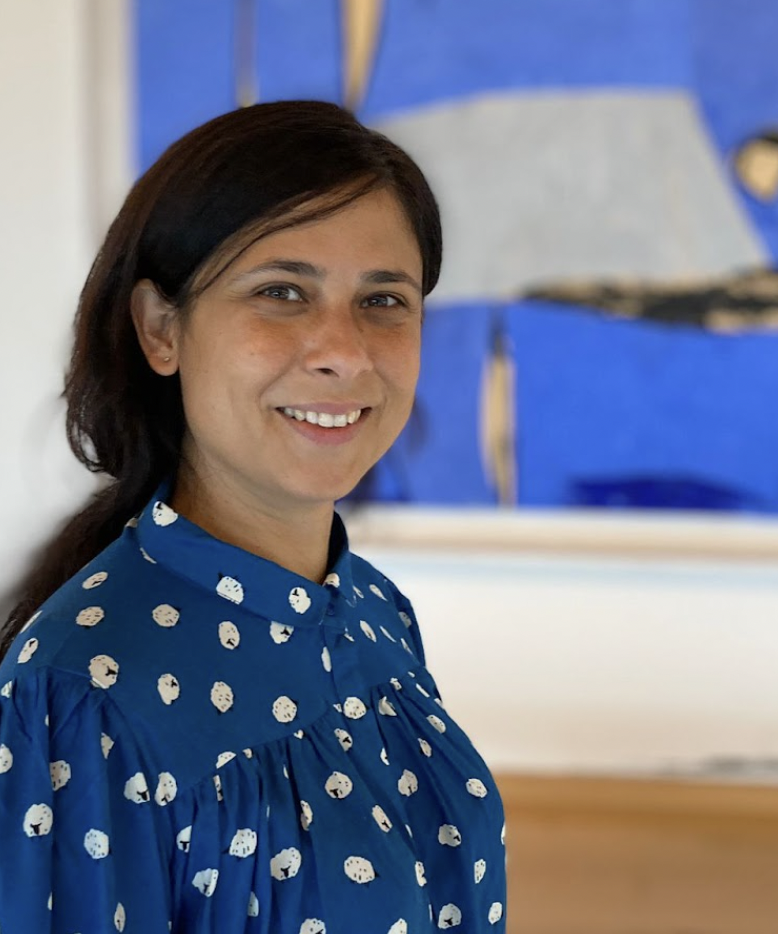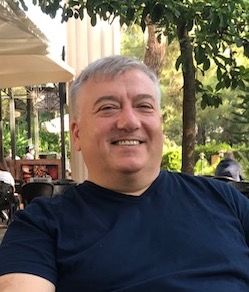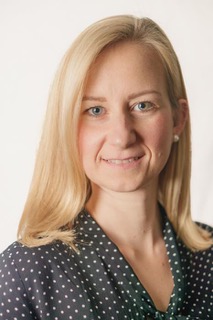Technical Area Committees
Objectives
The Technical Area Committees (TACs) form the backbone of EURASIP’s technical activities. The TAC members are leading scientists and technical experts in their field. The TACs support EURASIP’s technical activities to ensure highest quality and relevant development of the areas. They are instrumental in building the EURASIP community and adding value for our members.
The TACs facilitate the interaction and communication of EURASIP members in specific scientific areas, notably by:
- Sharing knowledge and visions
- Discussing trends
- Spreading information about innovations
- Creating ties and networks
- Facilitating collaboration beyond EURASIP
- Organizing meetings and events
In addition, the TACs and their members are expected to:
- EURASIP conferences
- contribute as reviewers and technical committee members
- propose tutorials and special sessions
- EURASIP publications
- contribute as reviewers
- nominate associate editors, guest editors, editor-in-chief
- review scope of EURASIP publications
- propose special issues
- EURASIP awards process
- propose award nominations
- provide reviews of award nominations
- Participate in workshop and summer school organization
- Participate at the annual meeting held during EUSIPCO
- Nominate new TAC members and participate in voting
The Director for Technical Activities will oversee the TAC activities and interact with the TAC Chairs. For specific matters, the TAC Chairs will interface with
- Director for Technical Programs for EURASIP conferences, workshops, summer schools
- Director for Publications for EURASIP publications
- Director for Awards for EURASIP awards
Establishment
TACs are established by the EURASIP Board of Directors following a proposal to the EURASIP President by at least 15 EURASIP members. The proposal should define/include
- The technical area to be addressed
- The motivation and benefit of establishing a TAC in the specific scientific area
- Relation to existing TACs
- A list of the TAC founding members
- Proposed Chair and Vice-Chair
The EURASIP Board of Directors may accept or reject the proposal, or may also mandate changes, notably to have a balanced TAC membership with the established minimum number of members. While proposals may be submitted at any time, the establishment of new TACs will be announced at EUSIPCO.
Membership
TAC members are leading scientists and technical experts in their field. The TACs should strive for a diverse membership in terms of career stage, gender, geographic distribution, etc. TAC members are elected by the current TAC members. The term of TAC members is 3 years and can only be renewed once (see exceptions for the Chair and Vice-Chair); retiring TAC members cannot be candidates again before a resting of at least 1 year. A staggered appointment/renewal process is encouraged to ensure continuity. The TAC founding membership, as well as the founding Chair and Vice-Chair, are defined by the EURASIP Board of Directors when establishing the TAC.
To be efficient and relevant, TACs are composed of a minimum of 15 and a maximum of 25 members. Renewal of the TAC membership should be planned to respect these constraints.
The TACs have a large number of responsibilities for EURASIP’s technical activities. There is a desire to associate highly active TAC members after their membership term has expired and draw upon their expertise and engagement in the TAC activities. For this purpose, the TACs can appoint “Associate members”. More information on the Associate membership is to be found in the “TAC Associate Members” document.
Governance
TACs shall have a Chair and a Vice-Chair who substitutes for the Chair when needed. The TAC Chair is a member of the EURASIP Technical Activities Board, chaired by the Director for Technical Activities. The Chair is expected to attend the annual Technical Activities Board meeting held during EUSIPCO. The terms of the Chair and Vice-Chair are 3 years and cannot be renewed. The Vice-Chair takes over as Chair (with a 3-year term) when the Chair leaves. Well before the term ends, the Chair and Vice-Chair solicit nominations for the next Vice-Chair among members who have served at most 3 years and conduct an election. The past Chair automatically becomes a TAC member after the end of their term as Chair for a 1-year term. Thus, the Chair can serve a total of 3+3+3+1 years in the TAC.
TAC Membership Elections
The Chair and Vice-Chair are responsible for the annual membership elections. An annual call for nomination of new members is published in the EURASIP Newsletter. Nominators must complete the nomination form and submit to the TAC Chair. Self-nominations are allowed and all nomination require a supporting statement from a member of the corresponding TAC. The Chair and Vice-Chair should solicit the interest of members willing to serve a second term, these members do not require a nomination. The Chair and Vice-Chair determine the number of available memberships before the election takes place. They report the outcome to the TAC, nominators, and Director of Technical Activities.
Meetings
The TAC Chair will organize meetings, which can be online or face-to-face. TACs are expected to meet at EUSIPCO under the logistic constraints allowed by the conference organizers. TAC members are expected to participate in person at the yearly EUSIPCO TAC meeting at least every other year.
Reporting
Every year before the end of March, the TAC should submit to the EURASIP Board of Directors a report of the previous year’s activities, events and achievements.
Review
To assure that TACs remain relevant and useful, they will be reviewed regularly. Additional reviews may be defined at the discretion of the EURASIP Board of Directors. The review will be conducted by a review committee created under the auspices of the EURASIP Board of Directors with at least three EURASIP members; non-EURASIP members may be invited to serve on this committee if considered appropriate. Following a negative review, the EURASIP Board of Directors may take actions to improve the situation or close the TAC.
TAC Website
The TACs are displayed on the EURASIP website, notably the TAC areas, membership, terms, and former members.
TAC Calendar
Click here to download an Annual Calendar of Activities.
The ASMSP TAC focuses on a wide range of audio and acoustic signal processing topic, including microphone and loudspeaker array processing; spatial audio capturing, processing and rendering; audio and speech enhancement and restoration; system identification and dereverberation; adaptive audio processing; speech perception, analysis, and synthesis; sound and music modeling, processing and coding; music signal analysis, processing and synthesis; music information extraction and retrieval; auditory modeling and hearing aids; quality and intelligibility measures; parallel processing and algorithm development for audio and acoustic applications; audio and acoustic signal descriptors and informatics.
Members
| Emmanouil Benetos | Queen Mary University of London, UK | 2023 – 2025 |
| Carmine Emanuele Cella | Ecole Normale Superieure, France | 2019 – 2024 |
| Shlomo E. Chazan | Bar-Ilan University, Israel | 2022 – 2024 |
| Mads Christensen | Aalborg University, Denmark | 2022 – 2024 (Chair) 2019 – 2021 (Vice-Chair) 2016 – 2019 |
| Maximo Cobos | Universitat de València | 2022 – 2024 |
| George Fazekas | QMUL, UK | 2024 – 2026 |
| Daniele Giacobello | Sonos, Inc., USA | 2019 – 2024 |
| Stefan Goetze | University of Sheffield, UK | 2024 – 2026 |
| Noboru Harada | NTT, Japan | 2024 – 2026 |
| Jesper Rindom Jensen | Aalborg University, Danmark | 2022 – 2024 |
| Zbynek Koldovsky | Technical University of Liberec, Czech Republic | 2023 – 2025 |
| Konrad Kowalczyk | AGH University of Science and Technology, Poland | 2023 – 2025 |
| Antoine Liutkus | INRIA, France | 2022 – 2024 |
| Shoji Makino | University of Tsukuba, Japan | 2019 – 2024 |
| Nilesh Madhu | Ghent University, Belgium | 2022 – 2024 |
| Annamaria Mesaros | Tampere University, Finland | 2023 – 2025 |
| Pejman Mowlaee | Jabra, Denmark | 2024 – 2026 |
| Nobutaka Ono | Tokyo Metropolitan University, Japan | 2023 – 2025 |
| Archontis Politis | Tampere University, Finland | 2024 – 2026 |
| Sebastian Schlecht | Aalto University, Finland | 2024 – 2026 |
| Toon van Waterschoot | KU Leuven, Belgium | 2019 – 2024 |
| Wenwu Wang | University of Surrey, UK | 2022 – 2024 (Vice – Chair) |
Associate Members
| Sharon Gannot | Bar-Ilan University , Israel | 2021 – 2024 |
| Walter Kellermann | FAU Erlangen-Nuremberg, Germany | 2022 – 2024 |
| Rainer Martin | Ruhr University Bochum, Germany | 2022 – 2024 |
Former Members
| Fabio Antonacci | Politecnico di Milano, Italy | 2016 – 2021 |
| Jens Ahrens | Chalmers University of Technology, Sweden | 2018 – 2020 |
| Tom Bäckström | Aalto University, Finland | 2019 – 2021 |
| Stefan Bilbao | University of Edinburgh, UK | 2016 – 2017 |
| Hélène-Camille Crayencour | University Paris-Sud, France | 2018 – 2021 |
| Simon Doclo | University of Oldenburg, Germany | 2016 – 2021 |
| Filippo Fazi | Univ. of Southampton, UK | 2016 – 2018 |
| Sharon Gannot | Bar-Ilan University , Israel | 2016 – 2021 |
| Alberto Gonzalez | Universitat Politècnica de València, Spain | 2016 – 2018 |
| Emanuel Habets | FAU Erlangen-Nuremberg, Germany | 2022 – 2022 (Past-Chair) 2019 – 2021 (Chair) 2016 – 2018 (Vice-Chair) |
| Peter Jax | RWTH Aachen University, Germany | 2016 – 2018 |
| Jean-Marc Jot | Magic Leap, CA, USA | 2016 |
| Walter Kellermann | FAU Erlangen-Nuremberg, Germany | 2016 – 2021 |
| Ina Kodrasi | Idiap Research Institute, Switzerland | 2018 – 2020 |
| Heinrich Loellmann | FAU Erlangen-Nuremberg, Germany | 2018 – 2020 |
| Rainer Martin | Ruhr University Bochum, Germany | 2016 – 2021 |
| Shmulik Markovich-Golan | Intel Corporation, Israel | 2018 – 2020 |
| Alastair H. Moore | Imperial College, UK | 2018 – 2020 |
| John Mourjopoulos | University of Patras, Greece | 2016 – 2017 |
| Patrick Naylor | Imperial College, UK | 2016 – 2018 |
| Julian Parker | Native Instruments, DE | 2018 – 2020 |
| Mark Plumbley | University of Surrey, UK | 2016 – 2021 |
| Rudolf Rabenstein | FAU Erlangen-Nuremberg, Germany | 2016 – 2017 |
| Gael Richard | TELECOM ParisTech, France | 2016 – 2021 |
| Xavier Serra | Pompeu Fabra University, Spain | 2016 – 2017 |
| Mark Sandler | Queen Mary Univ. of London, UK | 2016 – 2018 |
| Augusto Sarti | Politecnico di Milano, Italy | 2019 – 2021 2016 – 2018 (Chair) |
| Lauri Savioja | AALTO, Finland | 2016 |
| Gerald Schuller | Ilmenau University, Germany | 2016 – 2018 |
| Sascha Spors | University of Rostock, Germany | 2016 – 2021 |
| Vesa Valimaki | AALTO University, Finland | 2016 – 2018 |
The BForSec TAC focuses on multimedia security, data forensics, hashing, watermarking, covert communications (steganography and steganalysis), applied cryptography, biometric recognition, biometric forensics, video surveillance, physical layer security, network security, hardware security, data privacy with its different declinations in the field of biometrics, social networks, cloud, and big data, de-identification methodologies.
Members
| Irene Amerini | Sapienza University of Rome, Italy | 2019 – 2024 |
| Felix Balado | University College Dublin, Ireland | 2019 – 2024 |
| Mario Di Mauro | University of Salerno, Italy | 2024 – 2026 |
| Ruggero Donida Labati | Università degli Studi di Milano, Italy | 2024 – 2026 (Chair) 2023 – 2025 |
| Virginia Franqueira | University of Kent, UK | 2023 – 2025 |
| Julio Hernandez-Castro | University of Kent, UK | 2021 – 2026 |
| Luca Maiano | Sapienza University of Rome, Italy | 2024 – 2026 |
| Sara Mandelli | Polytechnic University of Milan, Italy | 2024 – 2026 |
| Weizhi Meng | Technical University of Denmark | 2024 – 2026 |
| Aleksandra Mileva | Goce Delcev University of Štip, Macedonia | 2024 – 2026 (Vice-Chair) 2019 – 2024 |
| Pedro Ricardo Morais Inácio | University of Beira Interior, Portugal | 2024 – 2026 |
| Cecilia Pasquini | Fondazione Bruno Kessler, Italy | 2019 – 2024 |
| Stjepan Picek | Radboud University, The Netherlands | 2024 – 2026 |
| Simona Samardjiska | Radboud University, The Netherlands | 2024 – 2026 |
| Guenole Silvestre | University College Dublin, Ireland | 2020 – 2025 |
| Tobias Schmidbauer | FernUniversität in Hagen, Germany | 2024 – 2026 |
| Nicolas Sklavos | University of Patras, Greece | 2024 – 2026 |
| Ruben Tolosana | Universidad Autonoma de Madrid, Spain | 2023 – 2025 |
| David Vázquez-Padín | Universidade de Vigo, Spain | 2022 – 2024 |
| Ruben Vera-Rodriguez | Universidad Autonoma de Madrid, Spain | 2020 – 2025 |
Associate Members
| Paulo Lobato Correia | Instituto Superior Técnico, Portugal | 2024 |
| Emanuele Maiorana | Universita’ degli Studi Roma Tre, Italy | 2024 |
| Kamal Nasrollahi | Aalborg University, Denmark | 2024 |
| Vitomir Štruc | University of Ljubljana, Slovenia | 2024 |
Former Members
| Patrick Bas | Ecole Centrale de Lille, France | 2016 – 2017 |
| Giulia Boato | University of Trento, Italy | 2018 – 2023 |
| Luca Caviglione | National Research Council of Italy | 2018 – 2023 |
| Patrizio Campisi | Universita’ degli Studi Roma Tre, Italy | 2018 – 2023 2016 – 2017 (Chair) |
| Paulo Lobato Correia | Instituto Superior Técnico, Portugal | 2024 (Associate) 2021 – 2023 2018 – 2020 (Chair) |
| Zekeriya Erkin | TU Delf, Netherlands | 2016 – 2018 |
| Thomas Gross | University of Newcastle upon Tyne, UK | 2016 – 2017 |
| Anthony Ho | University of Surrey, UK | 2016 – 2018 |
| Tanya Ignatenko | GN Hearing A/S | 2016 – 2021 |
| Jörg Keller | FernUniversität in Hagen, Germany | 2018 – 2020 |
| Emanuele Maiorana | Universita’ degli Studi Roma Tre, Italy | 2024 (Associate) 2021 – 2023 (Chair) 2016 – 2020 |
| Wojciech Mazurczyk | Warsaw University of Technology, Poland | 2016 – 2021 |
| Kamal Nasrollahi | Aalborg University, Denmark | 2024 (Associate) 2021 – 2023 (Vice-Chair) 2018 – 2020 |
| Fernando Pérez-González | Universidade de Vigo, Spain | 2016 – 2021 |
| Alessandro Piva | University of Florence, Italy | 2016 – 2018 |
| Husrev Taha Sencar | TOBB University, Turkey | 2023 (Associate) 2016 – 2021 |
| Vitomir Štruc | University of Ljubljana, Slovenia | 2024 (Associate) 2018 – 2023 |
| Andreas Uhl | Salzburg University of Applied Sciences, Austria | 2021 – 2023 2018 – 2020 (Vice-Chair) |
| Sviatoslav (Slava) Voloshynovskiy | University of Geneva, Switzerland | 2022 (Associate) 2016 – 2021 |
| Steffen Wendzel | Worms University of Applied Sciences & Fraunhofer FKIE, Germany | 2018 – 2023 |
This TAC aims to address and engage in emerging developments at the confluence of signal processing, big data analytics, and machine learning research. Whereas machine learning tools are often employed to enable new signal processing applications, we are also interested in developing new signal and data analysis and synthesis theory, algorithms, and their performance analysis to enable new machine learning applications. This TAC aims to infuse machine learning research with advanced statistical signal processing, factor analysis, and optimization tools – that is, to contribute our unique signal processing expertise to the broader machine learning community.
Members
| Csaba Benedek | Institute for Computer Science and Control, Hungary | 2022 – 2024 |
| Nikos Deligiannis | Vrije Universiteit Brussel, Belgium | 2024 (Past Chair) 2021 – 2023 (Chair) 2018 – 2020 (Vice-Chair) |
| Mireille El Gheche | Sony AI, Zurich, Switzerland | 2023 – 2025 |
| Filip Elvander | Aalto University, Finland | 2023 – 2025 |
| Chiara Galdi | EURECOM, France | 2023 – 2025 |
| Diego Gragnaniello | University of Naples Federico II | 2024 (Vice-Chair) 2021 – 2023 |
| Laurent Jacques | UCLouvain, Belgium | 2019 – 2024 |
| Koray Kayabol | Gebze Technical University (GTU) | 2021 – 2026 |
| Zhanyu Ma | Beijing University of Posts and Telecommunications, China | 2019 – 2024 |
| Angshul Majumdar | Indraprastha Institute of Information Technology Delhi, India | 2023 – 2025 |
| Joao Mota | Heriot-Watt University | 2021 – 2024 |
| Stefano Olivieri | MathWorks | 2019 – 2024 |
| Symeon Papadopoulos | Information Technologies Institute, Greece | 2022 – 2024 |
| Aleksandra Pižurica | Ghent University, Belgium | 2019 – 2024 |
| Francesco Renna | University of Porto, Portugal | 2022 – 2024 |
| Christian Riess | Friedrich-Alexander University Erlangen-Nürnberg | 2021 – 2026 |
| Miguel Rodrigues | University College London | 2019 – 2024 |
| Frederik Temmermans | Vrije Universiteit Brussel | 2024 – 2026 |
| Benedetta Tondi | University of Siena | 2024 – 2026 |
| Laura Toni | University College London | 2021 – 2026 |
| Evaggelia Tsiligianni | University of Ioannina | 2024 – 2026 |
| Diego Valsesia | Politecnico di Torino, Italy | 2021 – 2026 |
| Luisa Verdoliva | University of Naples Federico II, Italy | 2024 (Chair) 2019 – 2023 |
Associate Members
| Saikat Chatterjee | KTH, Stockholm, Sweden | 2022 – 2024 |
| Emilie Chouzenoux | Université Paris-Est Marne-la-Vallée, France | 2024 |
Former Members
| Vince Calhoun | University of New Mexico | 2016 – 2021 |
| Constantine Caramanis | Univ. of Texas, Austin, US | 2016 – 2018 |
| Saikat Chatterjee | KTH, Stockholm, Sweden | 2022 – 2024 (Associate) 2021 – 2021 2016 – 2020 (Chair) |
| Emilie Chouzenoux | Université Paris-Est Marne-la-Vallée, France | 2024 (Associate) 2018 – 2023 |
| Wei Dai | Imperial College London, United Kingdom | 2016 – 2018 |
| Monika Dörfler | University of Vienna, Austria | 2018 – 2023 |
| Cédric Févotte | CNRS, Nice, France | 2016 – 2017 |
| Mário A. T. Figueiredo | Instituto Superior Técnico, Lisboa, Portugal | 2016 – 2018 |
| Pascal Frossard | EPFL, Switzerland | 2022 – 2023 (Associate) 2016 – 2021 |
| Gaja Giryes | Tel Aviv University, Israel | 2016 – 2021 |
| Rémi Gribonval | INRIA, France | 2016 – 2021 |
| Zaid Harchaoui | Courant Institute for Mathematical Sciences, USA | 2016 – 2018 |
| Alexander Jung | Aalto University, Finland | 2018 – 2023 |
| Suleyman Serdar Kozat | Bilkent Univ., Ankara, Turkey | 2018 – 2020 |
| Ercan Engin Kuruoglu | Italian National Council of Research, Italy | 2018 – 2023 |
| Jan Larsen | DTU, Lyngby, Danmark | 2016 – 2018 |
| Eric Moreau | Univ. of Toulon, France | 2016 – 2018 |
| Morten Morup | DTU, Lyngby, Danmark | 2016 – 2018 |
| Frédéric Pascal | Centrale Supélec, France | |
| Nelly Pustelnik | CNRS, France | 2016 – 2018 |
| Cédric Richard | UNICE, Sophia-Antipolis, France | 2016 – 2021 |
| Ignacio Santamaria | Univ. of Cantabria, Spain | 2016 – 2017 |
| Nikos Sidiropoulos | University of Virginia, US | 2022 (Associate) 2016 – 2021 |
| Karin Schnass | University of Innsbruck, Austria | 2016 – 2020 |
| Thomas Schon | Uppsala University, Sweden | 2016 – 2017 |
| Kostas Slavakis | SUNY, Buffalo, US | 2016 – 2017 |
| Paris Smaragdis | UIUC, US | 2016 – 2017 |
| Richard Turner | University of Cambridge, UK | 2016 – 2017 |
| Silvia Villa | Politecnico di Milano, Italy | 2018 – 2020 |
The TAC SPCN is devoted to signal processing conceived for communications and networking with applications in the fields of next generation systems designed for wireless communications, crowd sensing, smart cities, autonomy, sustainability, trustworthiness, and Internet of Things. By embracing information theory, statistical inference, communication theory, and optimization, this TAC addresses signal processing techniques for synchronization, modulation, cooperation, diversity, beamforming, sensing, and localization, as well as quantum systems and networks.
Members
| George Alexandropoulos | National and Kapodistrian University of Athens, Greece | 2024 – 2026 (Chair) 2022 – 2023 (Vice-Chair) 2021 – 2022 |
| Italo Atzeni | Centre for Wireless Communications, University of Oulu | 2024 – 2026 |
| Alexios Balatsoukas-Stimming | TU Eindhoven, The Netherlands | 2021 – 2026 |
| Andreas P. Burg | École Polytechnique de Lausanne, Switzerland | 2024 (Past Chair) 2022 – 2023 (Chair) 2019 – 2021 (Vice-Chair) 2016 – 2018 |
| Paolo Di Lorenzo | Sapienza University of Rome, Italy | 2023 – 2025 |
| Ana Garcia Armada | Universidad Carlos III de Madrid | 2024 – 2026 |
| Maxime Guillaud | INRIA, France | 2024 – 2026 (Vice-Chair) 2023 – 2023 |
| Vahid Jamali | Technical University of Darmstadt | 2024 – 2026 |
| Eduard A. Jorswieck | TU Dresden, Germany | 2019 – 2024 |
| Angel Lozano | Univ. Pompeu Fabra | 2024 – 2026 |
| Michele Magno | ETH Zurich, Switzerland | 2023 – 2025 |
| Gerald Matz | Institute of Telecommunications, Germany | 2023 – 2025 |
| Xavier Mestre | CTTC, Spain | 2019 – 2024 |
| Hien Ngo | Queen’s University Belfast | 2024 – 2026 |
| Luca Sanguinetti | University of Pisa, Italy | 2019 – 2024 |
| Ignacio Santamaria | Universidad de Cantabria | 2024 – 2026 |
| Dirk Slock | EURECOM | 2024 – 2026 |
| Christoph Studer | ETH Zurich, Switzerland | 2021 – 2026 |
| Stefano Tomasin | University of Padova | 2024 – 2026 |
| Dirk Wübben | University of Bremen, Germany | 2023 – 2025 |
| Evangelos Vlachos | Industrial Systems Institute, ATHENA Research Center | 2024 – 2026 |
Associate Members
| Raymond Knopp | EURECOM, France | 2022 – 2023 |
| Christoph Mecklenbräuker | TU Wien, Austria | 2022 – 2023 |
Former Members
| Mark A. Beach | Bristol, United Kingdom | 2016 – 2018 |
| Hanna Bogucka | Poznan University of Technology, Poland | 2016 – 2018 |
| Guiseppe Caire | TU Berlin, Germany | 2016 – 2018 |
| Andrea Conti | University of Ferrara, Italy | 2016 – 2018 |
| Mérouane Debbah | Supelec & Huawei Labs Paris, France | 2016 – 2018 |
| Thomas Eriksson | Chalmers University, Sweden | 2016 – 2018 |
| Gerhard Fettweis | TU Dresden, Germany | 2016 – 2018 |
| Lajos Hanzo | Univ Southhampton, UK | 2016 – 2018 |
| Raymond Knopp | EURECOM, France | 2019 – 2021 (Chair) 2016 – 2018 (Vice-Chair) |
| Marios Kountouris | EURECOM, France | 2021 – 2023 |
| Geert Leus | Delft University, Netherlands | 2016 – 2017 |
| Marco Luise | University of Pisa, Italy | 2016 – 2018 |
| Christos Masouros | University College London | 2018 – 2020 |
| Christoph Mecklenbräuker | TU Wien, Austria | 2019 – 2021 2016 – 2018 (Chair) |
| Ana Pérez-Neira | UPC, Barcelona, Spain | 2016 – 2018 |
| Marius Pesavento | TU Darmstadt, Germany | 2016 – 2018 |
| Markus Rupp | TU Wien, Austria | 2016 – 2018 |
| Saeid Sanei | University of Surrey, UK | 2016 – 2018 |
| Slawomir Stanczak | TU Berlin | 2018 – 2020 |
| Mikko Valkama | TU Tampere, Finland | 2016 – 2021 |
| Björn Ottersten | University of Luxemburg and KTH, Sweden | 2016 – 2017 |
| Moe Z. Win | Massachussetts Institute of Technology, US | 2018 – 2023 |
| Flavio Zabini | University of Bologna, Italy | 2018 – 2023 |
Distributed signal processing for sensor array,
Massive array processing,
Compressed sensing and sparsity-aware techniques,
Compressed sampling for non-band-limited signals,
DOA estimation, source localization and tracking in multisensor systems,
Multichannel signal processing for communications and remote sensing,
Multiresolution, multispectral signal processing,
Waveform diversity for spectral dense environment,
Cognitive waveform design.
Members
| Karim Abed-Meraim | Polytech Orléans, France | 2020 – 2025 |
| Felix Antreich | Aeronautics Institute of Technology (ITA), Brazil | 2024 – 2026 |
| Charles Cavalcante | Federal University of Ceará, Brazil | 2022 – 2024 |
| Hing Cheung So | City University of Hong Kong, China | 2022 – 2024 |
| Alessio Fascista | University of Salento, Italy | 2023 – 2025 |
| João Paulo Javidi da Costa | Hamm-Lippstadt University of Applied Sciences, Germany | 2024 – 2026 |
| Andre L.F. de Almeida | Federal University of Ceará, Fortaleza, CE, Brazil | 2022 – 2024 (Vice-Chair) 2018 – 2021 |
| Marco di Renzo | CNRS – CentraleSupelec, Paris-Saclay University, France | 2022 – 2024 |
| Sharon Gannot | Bar-Ilan University, Israel | 2022 – 2024 |
| Fulvio Gini | University of Pisa, Italy | 2019 – 2024 |
| Abderrahim Halimi | Heriot-Watt University, Edinburgh, UK | 2022 – 2024 |
| Martin Haardt | Ilmenau University of Technology, Germany | 2023 – 2025 |
| Philipp Heidenreich | Advanced Research and Engineering, Stellantis, Opel Automobile GmbH, Germany | 2022 -2024 |
| Braham Himed | Air Force Research Laboratory, Dayton. OH, USA | 2020 – 2025 |
| Eleftherios Kofidis | University of Piraeus, Greece | 2024 – 2026 |
| Didier le Ruyet | Conservatoire National des Arts et Métiers (CNAM), Paris, France | 2022 – 2024 |
| Danilo Orlando | Unicusano University, Italy | 2022 – 2024 |
| Piya Pal | University of California, US | 2020 – 2025 |
| Marius Pesavento | TUD, Darmstadt, Germany | 2022 – 2024 (Chair) 2019 – 2021 (Vice-Chair) 2016 – 2018 |
| Sundeep Prabhakar Chepuri | Indian Institute of Science Bangalore, India | 2019 – 2024 |
| Florian Romer | Fraunhofer Institute for Nondestructive Testing IZFP Ilmenau, Germany | 2019 – 2024 |
| Stefania Sardellitti | University of Rome “La Sapienza”, Italy | 2022 – 2024 |
| Gonzalo Seco Granados | Universitat Autonoma de Barcelona, Spain | 2022 – 2024 |
| Jordi Vilà-Valls | ISAE-SUPAERO/University of Toulouse, France | 2022 – 2024 |
| Stephan Weiss | University of Strathclyde, UK | 2024 – 2026 |
Associate Members
| Mohammed Nabil El Korso | Paris Nanterre University, France | 2024 |
| Sergiy A. Vorobyov | Aalto University, Finland | 2024 |
Former Members
| Kostas Berberidis | University of Patras, Patras, Greece | 2016 – 2021 |
| Remy Boyer | University of Paris-Sud, Gif-Sur-Yvette, France | 2016 – 2021 |
| Pascal Chevalier | CNAM, Thales Expert, France | 2016 – 2021 |
| Angelo Coluccia | Università del Salento, Lecce, Italy | 2018 – 2023 |
| Laurent Ferro-Famil | Université de Rennes, France | 2021 (Associate) 2016 – 2018 |
| Maria Sabrina Greco | University of Pisa, Italy | 2019 – 2021 2016 – 2018 (Chair) |
| Andreas Jakobsson | Lund University, Lund, Sweden | 2016 – 2021 |
| Walter Kellermann | University Erlangen-Nuremberg, Germany | 2016 – 2021 |
| Visa Koivunen | Aalto University, Finland | 2016 – 2021 |
| Rodrigo de Lamare | University of York, York, UK & Pontifical Catholic University of Rio de Janeiro, Brazil | 2021 (Associate) 2016 – 2018 |
| Pascal Larzabal | Ecole Normale Supérieure de Cachan, Cachan Cedex, France | 2016 – 2021 |
| Mohammed Nabil El Korso | Paris Nanterre University, France | 2018 – 2023 |
| Giuseppe Ricci | University of Salento, Lecce, Italy | 2016 – 2021 |
| Luca Sanguinetti | University of Pisa, Italy | 2021 (Associate) 2016 – 2018 |
| Joseph Tabrikian | Ben-Gurion University of the Negev, Be’er-Sheva, Israel | 2016 – 2021 |
| Sergiy A. Vorobyov | Aalto University, Finland | 2018 – 2023 |
| Abdelhak Zoubir | TUD, Darmstadt, Germany | 2016 – 2021 |
This TAC promotes activities related to theory and methods in signal processing, including:
- Statistical signal processing: Detection, estimation, classification, identification, simulation, non-parametric methods, performance analysis and bounds.
- Massive and high-dimensional data: Distributed signal processing, online algorithms, random matrix theory.
- Signal and geometry: Information geometry, inference (Bayesian, approximate, robust), signal processing over graphs, tensor networks, multimodal data.
- Structured models and inversion: Multidimensional/multilinear models, sparse modeling, compressed sensing, inverse problems.
- Optimization: Convex optimization, non-convex optimization, stochastic optimization, optimization on manifolds.
- Signal Processing for Graphs and Networks: statistical approaches (RMT), graph representation and analysis, wavelets, distributed processing and optimization.
- Signal, image and artificial intelligence: Representation learning, optimal transport, analysis of learning methods.
Members
| Karim Abed-Meraim | Université d’Orléans/ Lab. PRISME, France | 2022 – 2024 |
| Mohammad Alaee | University of Luxembourg, Luxembourg | 2023 – 2025 |
| Yoann Altmann | Heriot-Watt University, UK | 2019 – 2024 |
| Rémy Boyer | University of Lille, France | 2019 – 2024 |
| Luiz Fernando de Oliveira Chamon | University of Stuttgart, Germany | 2024 – 2026 |
| Justin Dauwels | TU Delft, The Netherlands | 2022 – 2024 |
| Víctor Elvira | University of Edinburgh, UK. | 2019 – 2024 |
| Jean-François Giovannelli | Laboratoire de l’Intégration du Matériau au Système, France | 2019 – 2024 |
| Aundrey Giremus | Université de Bordeaux, France | 2023 – 2025 |
| Abderrahim Halimi | Heriot-Watt University, UK | 2019 – 2024 |
| Tanuj Hasija | Paderborn University, Germany | 2024 – 2026 |
| Eva Lagunas | University of Luxembourg, Luxembourg | 2019 – 2024 |
| Taous Meriem Laleg | INRIA, Paris, Saclay, France | 2024 – 2026 |
| Yunpeng Li | University of Surrey, UK | 2023 – 2025 |
| Luca Martino | Universidad Rey Juan Carlos (URJC), Spain | 2022 – 2024 |
| Wallace Alves Martins | Université de Toulouse (ISAE-SUPAERO), France | 2023 – 2025 |
| Michael Muma | Technische Universität Darmstadt, Germany | 2022 – 2024 (Chair) 2018 – 2021 |
| Roula Nassif | Université Côte d’Azur, France | 2024 – 2026 |
| François Orieux | Paris-Saclay University, France | 2024 – 2026 |
| Barbara Pascal | Nantes Université, École Centrale Nantes, CNRS, France | 2024 – 2026 |
| Clémence Prévost | University of Lille, CNRS, Centrale Lille, France | 2024 – 2026 |
| Audrey Repetti | Heriot-Watt University, UK | 2022 – 2024 |
| David Ramirez | Universidad Carlos III de Madrid, Spain | 2022 – 2024 |
| Julian Tachella | CNRS & ENS de Lyon, France | 2023 – 2025 |
| Jordi Vilà-Valls | ISAE-SUPAERO/University of Toulouse, France | 2022 – 2024 (Vice-Chair) 2019 – 2021 |
Former Members
This TAC is addressing the area of Visual Information Processing. Topics of interest include:
- image/video processing and analysis
- image/video filtering and enhancement
- image/video coding and transmission
- image/video capture, display, and printing
- computational imaging
- annotation, search & retrieval
- perception models and Quality of Experience
- watermarking
- privacy protection
- stereo, multi-view, and free viewpoint video
- multimodality
- interactivity
- systems, architectures, and applications.
Members
| João Ascenso | Instituto Superior Técnico – Instituto de Telecomunicações, Portugal | 2020 – 2025 | |
| Federica Battisti | University of Padova, IT | 2022 – 2024 (Vice-Chair) 2018 – 2021 | |
| Julián Cabrera Quesada | Universidad Politécnica de Madrid, Spain | 2019 – 2024 | |
| Marco Carli | Roma Tre University, IT | 2020 – 2025 | |
| Aladine Chetouani | Polytech Orléans France | 2024 – 2026 | |
| Marta Orduna Cortillas | Universidad Politécnica de Madrid, Spain | 2023 – 2025 | |
| Soren Forchammer | Technical University of Denmark, DK | 2020 – 2025 | |
| Jesús Gutiérrez | UPM, Spain | 2024 – 2026 | |
| Lukáš Krasula | Netflix, USA | 2022 – 2024 | |
| Chaker Larabi | Université de Poitiers, France | 2019 – 2024 | |
| Guillaume Lavoue | Ecole Nationale d’Ingénieurs de Saint Etienne, France | 2023 – 2025 | |
| Patrick Le Callet | Université de Nantes, France | 2022 – 2024 (Chair) 2016 – 2021 | |
| Thomas Maugey | INRIA, France | 2023 – 2025 | |
| Simone Milani | University of Padova, Italy | 2019 – 2024 | |
| William Puech | Université de Montpellier, France | 2019 – 2024 | |
| Jenni Raitoharju | University of Jyväskylä, Finland | 2022 – 2024 | |
| Toinon Vigier | Université de Nantes, France | 2022 – 2024 | |
| Toinon Vigier | Université de Nantes, France | 2022 – 2024 | |
| Irene Viola | CWI, Netherlands | 2024 – 2026 | |
| Mathias Wien | RWTH, Germany | 2024 – 2026 | |
| Emin Zerman | MIUN, Sweden | 2024 – 2026 | |
| Lu Zhang | INSA Rennes, France | 2022 – 2024 |
Associate Members
| Safak Dogan | Loughborough University London, UK | 2024 |
| Frédéric Dufaux | CNRS, France | 2024 |
| Jean-Luc Dugelay | Eurecom, France | 2021 – 2024 |
| Karel Fliegel | Czech Technical University in Prague, Czech Republic | 2024 |
| Moncef Gabbouj | Tampere University of Technology, Finland | 2021 – 2024 |
| Alexandros Iosifidis | Aarhus University, DK | 2023 – 2024 |
| Fernando Pereira | Instituto Superior Técnico – Instituto de Telecomunicações, Portugal | 2022 – 2024 |
| Giuseppe Valenzise | L2S CNRS, CentraleSupelec, Université Paris-Sud, France | 2024 |
Former Members
| Azeddine Beghdadi | University Sorbonne Paris Nord, France | 2021 – 2023 |
| Andrea Cavallaro | Queen Mary University of London, UK | 2016 – 2017 |
| Klaus Diepold | Technical University of Munich, Germany | 2016 – 2017 |
| Safak Dogan | Loughborough University London, UK | 2024 (Associate) 2018 – 2023 |
| Frédéric Dufaux | CNRS, France | 2023 (Associate) 2022 (Past Chair) 2016 – 2021 (Chair) |
| Jean-Luc Dugelay | Eurecom, France | 2021 (Associate) 2016 – 2020 |
| Touradj Ebrahimi | Ecole Polytechnique Fédérale de Lausanne, Switzerland | 2016 – 2021 |
| Karel Fliegel | Czech Technical University in Prague, Czech Republic | 2024 (Associate) 2018 – 2023 |
| Moncef Gabbouj | Tampere University of Technology, Finland | 2021 (Associate) 2016 – 2020 |
| Anthony TS Ho | University of Surrey, UK | 2016 – 2018 |
| Alexandros Iosifidis | Aarhus University, DK | 2020 – 2022 |
| Stephane Marchand-Maillet | Université de Genève, Switzerland | 2016 – 2018 |
| Ferran Marques | Universitat Politècnica de Catalunya, Spain | 2016 – 2018 |
| Nikos Nikolaidis | Aristotle University of Thessaloniki, Greece | 2016 – 2021 |
| Fernando Pereira | Instituto Superior Técnico – Instituto de Telecomunicações, Portugal | 2022 (Associate) 2016 – 2021 |
| Béatrice Pesquet-Popescu | Télécom ParisTech, France | 2016 – 2018 |
| Philippe Salembier | Universitat Politècnica de Catalunya, Spain | 2016 – 2018 |
| Peter Schelkens | Vrije Universiteit Brussels, Belgium | 2022 – 2022 2016 – 2021 (Vice -Chair) |
| Murat Tekalp | Koc University, Turkey | 2016 – 2018 |
| Stefano Tubaro | Politecnico di Milano, Italy | 2016 – 2021 |
| Giuseppe Valenzise | L2S CNRS, CentraleSupelec, Université Paris-Sud, France | 2024 (Associate) 2018 – 2023 |
This TAC covers a broad area of image & signal processing dedicated to biomedical applications in medicine, biology, physiology, neurosciences, genetics, and so on. These fields are driven by the availability of large amounts of signals and images with a huge variety in terms of their nature and spatial and temporal scales; data sources include microscopy, medical imaging devices, (wearable) sensors, all with an increasing degree of integration between acquisition and computation. In addition, there is a need to quantify more advanced features from this data using modeling approaches adopted from the image & signal processing community at large.
Motivation
Advanced image & signal processing has become an essential part of biomedical research in medicine, molecular biology, neurosciences,… . The BISA TAC wants to actively promote synergies at the interdisciplinary interface where advanced imaging and data processing meet with biomedical sciences. In addition to image & signal processing tailored to biomedical applications, we also want to cover the emerging field of analytics, where learning from this type of data is pursued. An increasing number of researchers in signal processing and part of the EUSIPCO community are getting exposed and engaged into biomedical projects. Therefore, the BISA TAC will actively foster the emergence of a biomedical community within EUSIPCO. We also plan to reach out to other scientific communities.
Planned Activities
- Strengthen the biomedical activities at EURASIP in terms of workshops, tutorials, and special sessions, in particular, at EUSIPCO. Specifically, we will identify emerging topics, proposing special sessions & chairs.
- Initiate a Best Paper Award at EUSIPCO for papers in the area of biomedical image and signal processing.
- Encourage new special issues in the EUSIPCO journals on specific subtopics covered by our TAC.
- Provide expertise to the EURASIP Board of Directors.
Members
| Aydin Akan | Izmir University of Economics, Turkey | 2022 – 2024 (Chair) 2019 – 2021 |
| Nantheera Anastrasirichai | University of Bristol, UK | 2022 – 2024 |
| Adrian Basarab | University of Toulouse, IRIT, France | 2020 – 2025 |
| Cesar Caballero | Basque Center of Cognition, Brain and Language, Spain | 2019 – 2024 |
| Mauro Costagli | University of Genoa, Italy | 2022 – 2024 |
| Lofti Chaari | Toulouse INP, France | 2023 – 2025 |
| Patricia Figueiredo | Universidade de Lisboa | 2022 – 2024 |
| Miklós Gyöngy | University Dermus, Hungary | 2022 – 2024 |
| Roberto Hornero | University of Valladolid | 2022 – 2024 |
| Bori Hunyadi | TU Delft, The Netherlands | 2022 – 2025 (Vice-Chair) 2020 – 2021 |
| Ozlem Karabiber Cura | Izmir Katip Celebi University, Izmir, Turkey | 2026 – 2025 |
| Mustafa Kamasak | Istambul, Turkey | 2022 – 2024 |
| Ahmet Mert | Bursa Technical University, Bursa, Turkey | 2023 – 2025 |
| Arrate Muñoz Barrutia | Madrid Univ, Spain | 2021 – 2026 |
| Nora Ouzir | CentraleSupélec/University Paris-Saclay, France | 2024 – 2026 |
| Huy Phan | Queen Mary, London, UK | 2022 – 2024 |
| Fabienne Porée | Université de Rennes 1, France | 2020 – 2025 |
| Emma Robinson | King’s College, London, UK | 2021 – 2026 |
| Esra Saatci | Istanbul Kultur University, Istanbul, Turkey | 2023 – 2025 |
| Dorina Thanou | EPFL, Lausanne, Switzerland, | 2023 – 2025 |
| Devrim Unay | Izmir Univ, Turkey | 2022 – 2024 |
| Javier Vargas | McGill University, Canada | 2020 – 2025 |
| Carolina Varon | Université Libre de Bruxelles (ULB), Belgium | 2022 – 2024 |
Associate Members
| Philippe Ciuciu | CEA/NeuroSpin, INRIA Parietal team & Paris-Saclay University, France | 2023 – 2024 |
| Pablo Laguna | Zaragosa Univ, Spain | 2024 |
| Françoise Peyrin | CREATIS, INSA Lyon University of Lyon, France | 2023 – 2024 |
| Dimitri Van De Ville | Ecole Polytechnique Fédérale de Lausanne and Université de Genève, Switzerland | 2022 – 2024 |
| Michael Unser | Ecole Polytechnique Fédérale de Lausanne, Switzerland | 2022 – 2024 |
Former Members
| Sophie Achard | CNRS, France | 2019 – 2021 |
| Pierre Bellec | Université de Montréal, Canada | 2016 – 2018 |
| Danilo Bzdok | Department of Psychiatry, RWTH Aachen, Germany | 2018 – 2020 |
| Andrea Cavallaro | University of Copenhagen, Faculty of Science, Denmark | 2017 – 2019 |
| Philippe Ciuciu | CEA/NeuroSpin, INRIA Parietal team & Paris-Saclay University, France | 2022 (Past Vice-Chair) 2019 – 2021 (Vice-Chair) 2016 – 2018 |
| Antitza Dantcheva | INRIA, Sophia Antipolis, France | 2018 – 2020 |
| Maarten De Vos | KU Leuven, Belgium | 2016 – 2021 |
| Pier Luigi Dragotti | Imperial College London, United Kingdom, UK | 2016 – 2021 |
| Florence Forbes | Grenoble Univ, France | 2021 – 2023 |
| Alexandre Gramfort | CNRS, LTCI, Telecom ParisTech, Université Paris-Saclay, France | 2017 – 2019 |
| Moritz Grosse-Wentrup | University of Munich, Germany | 2016 – 2021 |
| Lars Kai Hansen | Technical University of Denmark, Lyngby, Denmark | 2016 – 2018 |
| Ercan Kuruoglu | CNR – Istituto di Scienza e Tecnologie dell’Informazione “A. Faedo”, Pisa, Italy | 2016 – 2021 |
| Pablo Laguna | Zaragosa Univ, Spain | 2021 – 2023 |
| Jean-Marc Lina | Ecole de Technologie Supérieure, Montréal, Canada | 2016 – 2018 |
| Andre Marquand | Donders Institute for Brain, Cognition and Behaviour, Netherlands | 2019 – 2021 |
| Vittorio Murino | Italian Institute of Technology, Genova, Italy | 2016 – 2018 |
| Barbara Nicolas | CREATIS, University of Lyon, CNRS, France | 2018 – 2023 |
| Jean-Christophe Olivo-Marin | Institut Pasteur, France | 2016 – 2018 |
| Joaquin Oton | National Center of Biotechnology (CSIC), Campus Universidad Autónoma de Madrid, Spain | 2017 – 2022 |
| Françoise Peyrin | CREATIS, INSA Lyon University of Lyon, France | 2022 (Past Chair) 2019 – 2021 (Chair) 2016 – 2018 (Vice-Chair) |
| Josien Pluim | Eindhoven University of Technology, The Netherlands | 2016 – 2018 |
| Emine Ulku Saritas | Bilkent University, Turkey | 2020 – 2022 |
| Jan Sijbers | University of Antwerp, Belgium | 2016 – 2018 |
| Leif Sörnmo | Department of Biomedical Engineering, Lund University, Sweden | 2016 – 2018 |
| Magnús Örn Úlfarsson | University of Iceland, Reykavik, Iceland | 2016 – 2018 |
| Michael Unser | Ecole Polytechnique Fédérale de Lausanne, Switzerland | 2016 – 2021 |
| Gaetano Valenza | Research Center “E.Piaggio”, Faculty of Engineering, University of Pisa, Italy | 2017 – 2019 |
| Dimitri Van De Ville | Ecole Polytechnique Fédérale de Lausanne and Université de Genève Switzerland | 2018 – 2021 2016 – 2018 (Chair) |
| Javier Vargas | McGill University, Montréal, Canada | 2016 – 2018 |


